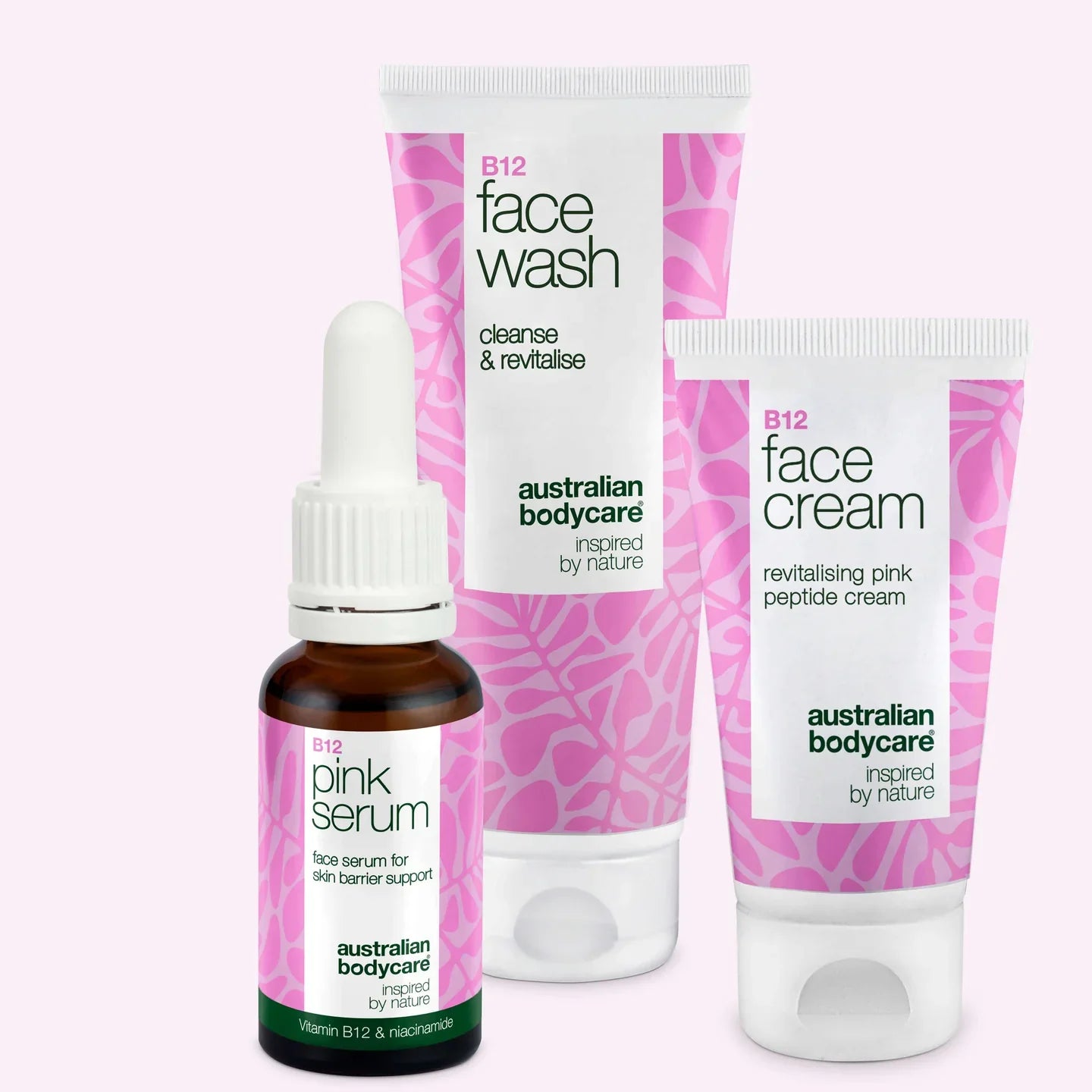Haemorrhoids – Stop the itching and pain – Good advice about fast treatment
Haemorrhoids are a highly uncomfortable complaint that is widespread among adults in the population. Haemorrhoids or piles are not dangerous, fortunately, and good treatments are available. They can usually be treated with special cream. Only rarely is surgical treatment necessary.
Table of contents
What are hemorrhoids?
Most people have heard of haemorrhoids or piles and perhaps made jokes about them – but what does it actually mean when someone has haemorrhoids? Basically, haemorrhoids are outpouchings filled with blood on the inner wall of the rectum. They can be explained as a kind of varicose vein in the rectum (i.e. the blood vessels have stretched, and therefore bulge out from the wall of the rectum). Haemorrhoids occur when the mucous membrane inside the rectum becomes thin and weakened. The blood vessels under the membrane can then begin to bulge out, and finally may protrude from the opening of the anus.
Haemorrhoids are benign and rarely dangerous, but can nevertheless cause considerable discomfort, such as stinging, itching, irritation, pain, and possibly bleeding during visits to the toilet.
Treatments are effective, however, and the most frequent will be a cream, possibly supplemented with suppositories. In some cases a surgical procedure may be necessary to remove the haemorrhoids.
Who can get haemorrhoids?
In principle, anyone can get haemorrhoids. They are a very common complaint, and it is estimated that a third of the population has had them, either once or several times as a recurring problem.
Haemorrhoids or piles usually affect adults. People prefer not to talk about them, but it is estimated that perhaps half the population above the age of 50 have or have had haemorrhoids. The risk of haemorrhoids increases with age. When younger people get haemorrhoids, it is typically women who are affected in connection with pregnancy and giving birth. This is due to the considerable increase in pressure in the veins. The same happens, for instance, with constipation and pressing extra during visits to the toilet, or when lifting heavy weights or doing heavy physical work generally. Women who have given birth to many children also have an increased risk of haemorrhoids.
What are the symptoms of haemorrhoids?
Most sufferers discover they have haemorrhoids because they suddenly feel itching, stinging, irritation and/or pain around the anus – usually in connection with visits to the toilet. Many will also find it difficult to keep clean after a visit to the toilet.
Some discover haemorrhoids because there is blood on the toilet paper when they wipe themselves on the toilet. If a haemorrhoid ruptures, it will look quite dramatic, with a lot of blood in the toilet bowl after a visit. A haemorrhoid can be compared with a balloon that is filled with blood instead of air. If it bursts, it will only bleed until the blood is emptied out. It looks dramatic, however, and may be alarming the first time.
If the haemorrhoids are internal, they cannot immediately be seen or felt. In contrast, external haemorrhoids are clearly visible as outpouchings on the anus, and you can feel them if you try with a finger. In many cases it is possible to push the outpouching back inside the anus after visiting the toilet.
Doctors divide haemorrhoids into five categories or degrees, depending on how large and troublesome the outpouchings are:
- Internal haemorrhoids that bleed, but are not visible and do not bulge out.
- Internal haemorrhoids that only bulge out when you press on the toilet, and which then slide back of their own accord.
- External haemorrhoids that are visible, bulge out, and have to be pushed into place after visits to the toilet.
- External haemorrhoids that bulge out constantly, and cannot be pushed into place.
Treatment of haemorrhoids
Haemorrhoids are uncomfortable, but fortunately, good treatments are available. The treatment will to a large extent depend on whether the haemorrhoids are relatively small, or whether they are large and troublesome.
Small, internal haemorrhoids
Small, internal haemorrhoids which have developed e.g. because of constipation can in many cases be treated simply by dealing with the constipation, so that the stools become soft and regular again. This can often be achieved by drinking plenty of water and getting enough fibre in the diet. You can get fibre, for instance from rye bread, wholemeal bread, oats and fruit. This may be supplemented with a fibre-rich product such as Husk (psyllium seed). Acute constipation can also be treated with a laxative, which you can buy over the counter from a pharmacy.
In the longer term, haemorrhoids caused by constipation can often be prevented by drinking plenty of water, taking exercise and eating a healthy diet with plenty of fibre.
Larger, external haemorrhoids
If the haemorrhoids have become larger and you are troubled by pain or stinging and itching, the treatment will probably be a cream which you can buy without a prescription from the pharmacy. When applied directly on the haemorrhoids, the cream works as a local anaesthetic and relieves pain.
Apart from the regular medicinal products available from the pharmacy, there are other remedies which are effective for problems near the anus such as itching and discomfort from haemorrhoids. One of these is a gel containing Australian Tea Tree Oil from Australian Bodycare, which relieves itching, stinging and irritation, and thus can be used as care to relieve discomfort round the anus.
If you suddenly feel pain (usually in connection with a visit to the toilet), it is probably a large haemorrhoid that has slipped out through the anus. You can often push it back in yourself, so that it does not get stuck and hurt. If you cannot do it yourself, your doctor will be able to do it for you.
If in doubt, see a doctor
If you feel pain, stinging or itching from the anus, or if there is suddenly blood on the toilet paper or in the toilet after a visit, you probably have haemorrhoids. However, these symptoms may also be caused by other diseases, so you should see a doctor about them.
The doctor will probably be able to decide whether you have haemorrhoids simply by looking at the area. He/she may examine the rectum with a finger in the anus.
Your doctor will normally suggest treatment with a cream or ointment for haemorrhoids, possibly supplemented with suppositories. Only in rare cases are haemorrhoids large and painful enough to require surgery to remove them.
Surgical treatment for haemorrhoids
In the great majority of cases, haemorrhoids can be treated effectively with a cream. In rarer cases a surgical procedure may be required to remove haemorrhoids.
Sometimes this may mean that the doctor makes a tiny cut in the haemorrhoid to empty the blood out of it. This is done under local anaesthetic. In other cases, if the haemorrhoid is larger, elastic may be placed tightly round it. It stops the supply of blood to the haemorrhoid, which will then shrink and drop off. This is the least uncomfortable form of surgical treatment, and can be done as an ambulant procedure without anaesthetic.
If the patient has large and very painful haemorrhoids, it may be necessary to remove them surgically. The procedure may be performed under local or full anaesthetic, depending on where the haemorrhoids are located and how large they are.
Haemorrhoids which have retracted by themselves – with or without treatment – may in some cases leave small loose skin tags or marisks. These are harmless, do not bleed, and do not cause pain, but unfortunately they mean that it may be more difficult to keep the area clean after visits to the toilet. If they are very troublesome, they can be removed by a minor surgical operation.
Cream for use with haemorrhoids
In the great majority of cases, haemorrhoids can be treated effectively with a cream, which you can buy over the counter at the pharmacy or drugstore.
The cream works partly to reduce the size of the haemorrhoid by causing the blood vessels to contract, while at the same time it disinfects and regenerates. If you also want the cream to work as a local anaesthetic and relieve pain, you will need a prescription from a doctor.
When haemorrhoids are due to constipation, it is important to deal with the constipation too. A laxative will help in the short term, and in the longer term it helps to eat more fibre, drink more fluid and get more exercise – all of which help to keep the bowels regular.
For most people, however, it is necessary to use a gel that treats the haemorrhoids here and now, to relieve the troublesome and unbearable itching, stinging and pain. You can buy a cream at the pharmacy or drugstore, or in health-food shops, if you prefer a product with more natural ingredients. You can find these, for example in Australian Bodycare's gel with Tea Tree Oil, which is suitable for treating stinging, itching and irritation around the anus. Products containing Tea Tree Oil are known to be effective for itching and irritation, and can therefore be used for problems around the anus.
What are the causes when people get haemorrhoids?
Typically, haemorrhoids appear because of constipation or in connection with pregnancy and giving birth. Repeated heavy lifting and generally heavy work may also contribute to the development of haemorrhoids. Extra strong pressure exerted on the veins in the mucous membrane in the rectum may cause outpouching in the blood vessels, and haemorrhoids develop.
Haemorrhoids appear when the supportive tissue around the blood vessels in the rectum are overstrained and weakened. This can happen in connection with pregnancy, giving birth or constipation, or generally with increasing age, and therefore the older we become, the greater the risk of haemorrhoids.
While it can be difficult to do much about the risk of developing haemorrhoids during pregnancy and giving birth, it is possible to think about toilet habits and heavy lifting.
If you have a tendency to get haemorrhoids, and your work involves heavy lifting and standing up for long periods, it might be a good idea to try to improve your working conditions.
If you often have constipation and hard stools, you should think about what you eat. A diet with more fibre, in the form of ryebread or wholemeal bread, oatmeal and fruit, plenty of fluids and regular exercise will keep your bowels working and ensure softer stools, so that you can avoid constipation more easily.
It is also a question of good habits on the toilet. Go to the toilet when you need to, and don’t suppress the urge. When you are sitting on the toilet, avoid pressing for a long time. Don’t sit there for along time reading the newspaper or checking your mobile, either.
FAQ about haemorrhoids
What are haemorrhoids?
Haemorrhoids or piles are a kind of varicose veins in the anus, i.e. outpouchings filled with blood in the mucous membrane of the rectum. They may be small, internal haemorrhoids located inside the rectum, or larger, external haemorrhoids that slip out of the anal opening. Haemorrhoids are troublesome and uncomfortable, but fortunately they are a harmless complaint.
Why do people get haemorrhoids?
Haemorrhoids form inside the rectum near the anus, when the mucous membrane is strained and becomes thin and weakened. The blood vessel under the membrane then bulges out, and may finally protrude from the opening of the anus. Haemorrhoids frequently appear because of constipation or in connection with pregnancy and giving birth. Heavy lifting can also cause haemorrhoids.
What do haemorrhoids look like?
Haemorrhoids are outpouchings filled with blood on the inner wall of the rectum. They can vary a great deal in size, and be more or less filled with blood. They may be small, internal haemorrhoids in the rectum, which you cannot see, or they may be large, external haemorrhoids that are visible because they have moved outside the anus.
How do people get haemorrhoids?
Haemorrhoids are typically caused by constipation or in connection with pregnancy and giving birth. They develop when extra pressure is exerted on the veins near the anus. The supporting tissue around the veins is overloaded and weakened, so the blood vessels form outpouchings – and then you have haemorrhoids.
What do haemorrhoids feel like?
Haemorrhoids are very uncomfortable, and may cause itching, stinging or pain in the area around the anus. Additionally, haemorrhoids may bleed, either simply oozing, or a lot, if one of them punctures.
When do haemorrhoids clear up?
Small, internal haemorrhoids may sometimes clear up by themselves, especially if they have been caused by constipation, and you have dealt with the constipation quickly. Larger, visible haemorrhoids, on the other hand, will rarely disappear of their own accord. They must be treated with a cream that will make them shrink, and which relieves symptoms such as itching, stinging and irritation.
Can haemorrhoids disappear by themselves?
Small, internal haemorrhoids may sometimes clear up by themselves, if you take action against constipation with a laxative and/or more fibre in your diet. On the other hand, you cannot expect larger, visible haemorrhoids to disappear of their own accord. They must be treated with a cream.
What should be done about haemorrhoids?
If you have haemorrhoids, they will need to be treated with a special cream that causes them to shrink, and which stops the itching, stinging and irritation. In addition, you must pay extra attention to cleaning yourself thoroughly when you have used the toilet, as this can be difficult if you have haemorrhoids. If you have a tendency to constipation, you should include more fibre in your diet, make sure you drink plenty of fluids, and exercise regularly.
Why do haemorrhoids itch?
Haemorrhoids itch, and this is primarily because it can be very difficult to keep the area around the anus completely clean when you have haemorrhoids. It is therefore important to treat them with a cream that firstly will cause them to shrink, and then will relieve the itching, stinging and irritation.
How do you treat haemorrhoids?
In the great majority of cases, haemorrhoids can be treated with a cream that makes them shrink, and which helps against the itching and irritation. With more fibre in your diet you can prevent constipation, which is a frequent cause of haemorrhoids. In some cases it may be necessary to supplement this with suppositories. In rare cases, and with larger haemorrhoids, they may have to be removed by surgery.





